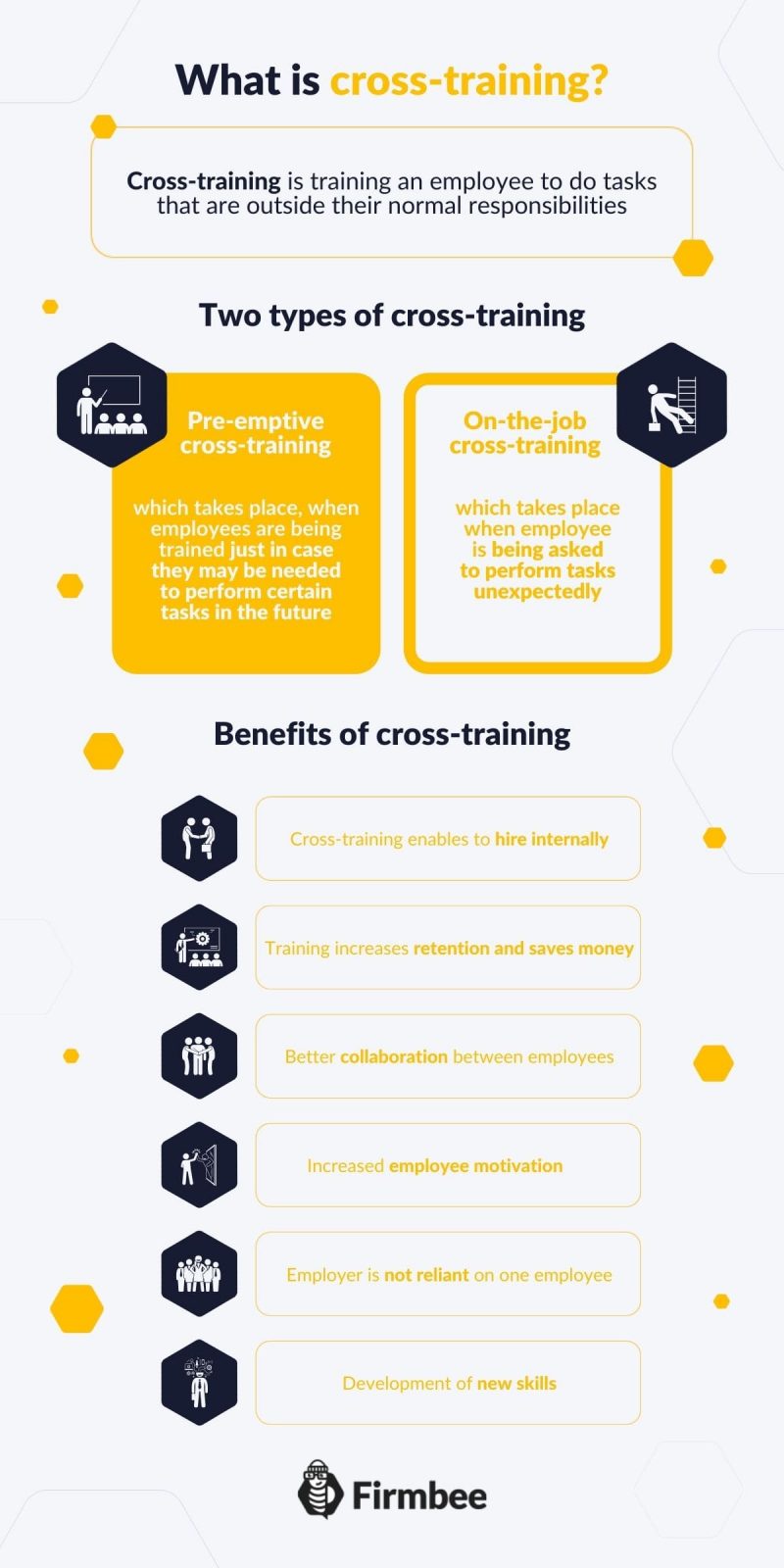Multiskilling in the workplace – have you heard about it? Multiskilling (cross-training) is one of the method of employee training, type of peer-education. This practice of training is particularly beneficial both to the employee and employer, since it increase versatility and effectiveness of the business. Cross-training can be used in every type of industry and almost for all roles in the workplace.
Multiskilling in the workplace – table of contents:
- What is multiskilling?
- Two types of multiskilling in the workplace
- Potential drawbacks of multiskilling
- Summary
What is multiskilling (cross-training)?
Multiskilling (cross-training) is training an employees to do tasks that are outside their normal responsibilities. It was long seen as good practice to train managers. The main assumption behind that approach was that managers, who know all the roles in their company are more flexible in managing the workforce. Currently, the practice of cross-training has moved beyond higher level candidates and may be applied to all ranks of employees.
The main reason to cross-train employees is to prepare the company for the unseen, unpredicted situations (disaster, death) as well as typical occurrences at workplace (holidays, leaves, retirements, and resignations). As we see, each manager must know something about multiskilling in the workplace.

Two types of multiskilling in the workplace
There are two types of employee cross-training, although most of the companies provide blended version of both of them.
Types of multiskilling (cross-training) include:
- pre-emptive multiskilling (cross-training), which takes place, when employees are being trained just in case they may be needed to perform certain tasks in the future.
- on-the-job multiskilling (cross-training), which takes place when employee is being asked to perform tasks unexpectedly, usually in the situation, when somebody has to leave the company or quits the position.
Benefits of multiskilling (cross-training)
Multiskilling (cross-training) enables to hire internally
Cross-training helps identify talented employees best-suited for some of the roles in the company. It is applicable for promoting staff to higher positions in case of unsuccessful external search for the right candidate.
Training increases retention and saves money
All forms of training pose a chance for employees to be recognized for their abilities because it increases opportunities for employee advancement. Training helps to keep employees motivated, reduces absenteeism and turnover. Since the hiring process proves to be so time-consuming and expensive, any method of cost reduction of recruitment and onboarding is beneficial for the company.
Better collaboration between employees
Cross-training experience allows employees to learn how to rely on each other as well as how to communicate and work together. It helps to create a team mentality which is necessary for all major projects to succeed.
Increased employee motivation
Most of the employees search for opportunities to grow with the company and are not particularly interested in dead-end jobs. Everyone wishes to be appreciated and to have good self-esteem and this is not possible if an individual feels stuck in one position. Smaller companies which can’t compete financially with bigger businesses should consider cross-training for their employees.
Employer is not reliant on one employee
In the situation where just a few employees in the company posses full knowledge about a procedure or a process cross-training seem to be necessary. Individuals with the key skills that nobody possess may decide to leave and this is a huge risk for the unprepared employer. Cross-training helps the organization to handle such situations with grace – employees may easily step into other roles and assure that all the tasks are done properly and efficiently.
Development of new skills
Thanks to cross-training individuals are able efficiently to develop additional sets of skills. This method of training is more affordable than other more traditional approaches although it needs to be carefully planned.
Potential drawbacks of multiskilling
There are drawbacks and concerns related to all possible business decisions made in the company. Similarly, there are minor (but preventable) drawbacks of multiskilling (cross-training) process. The risk related to this training method may be reduced greatly with strategic planning of the whole process.
One of the most terrifying occurrences in business is confidential information leakage. Usually unauthorized parties gain access to confidential information as a result of a security breach or a cyber attack, but there are other options. During cross-training employees share passwords, files and information and this increases the risk of information leakage. It poses real risk for the company hence all cross-training have to be carefully designed.
Read also: Top tips to stay motivated at work
If you like our content, join our busy bees community on Facebook, Twitter and Linkedin.
Author: Nicole Mankin
HR manager with an excellent ability to build a positive atmosphere and create a valuable environment for employees. She loves to see the potential of talented people and mobilize them to develop.
The most important questions
-
What is multiskilling?
Multiskilling is training an employees to do tasks that are outside their normal responsibilities.
-
What are the types of multiskilling in the workplace?
There are two types of cross-training: pre-emptive cross-training and on-the-job cross-training.
-
What are benefits of multiskilling?
There are several benefits of multiskilling in the workplace including: increased retention of employees, higher employee motivation, better communication at the workplace, internal recruitment savings, reduction of absenteeism, and opportunity for employees advancement.


















